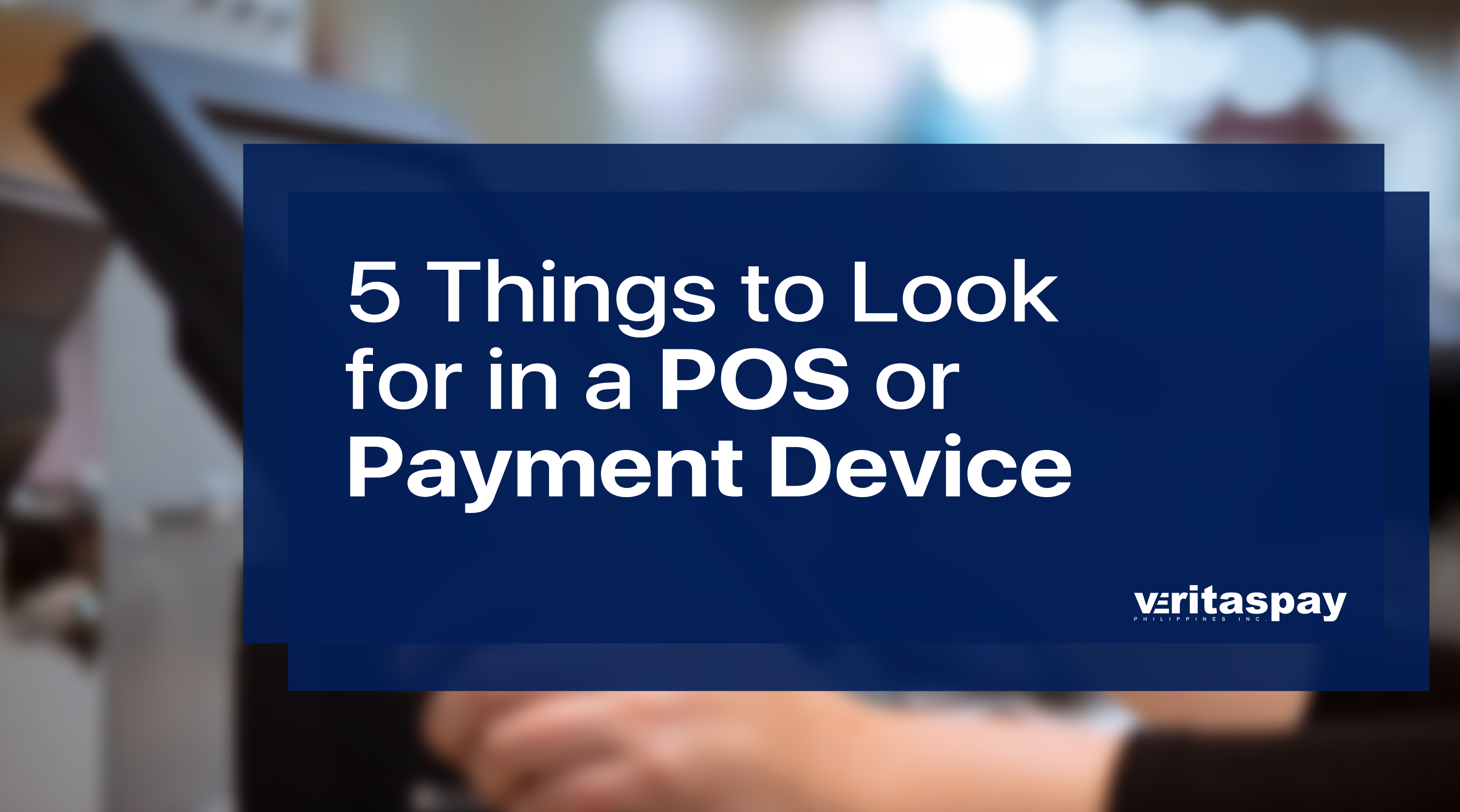5 Things to Look for in a POS or Payment Device
by Je Yaranon on January 2021

Payment devices are now a necessity when you have a business. The payment world has quickly transitioned digitally over the last couple of years, and the current pandemic has just heightened that need.
Point-of-sale (POS), as you know, now have a modernized version called Smart/Android POS – or as we call it here at VeritasPay, smart terminals. It can accept a wider variety of electronic transactions, assure a more secured processing, and also offer varying high-tech features, among others.
Installing your business with these new-age point-of-sales isn’t as simple as your other gadget shopping activities. It’s still new, so the factors to consider can be pretty overwhelming for many.
To help you identify some of the key points and understand which payment devices are really beneficial, we’ll be listing down five aspects to take note of. Make sure these attributes are present in a POS the next time you scour the market.
Card reader flexibility
With all the different card types coming out, which are fairly widespread among consumers, a payment device must be as flexible as possible. It should be able to recognize and read cards via dipping, swiping, and tapping, so aside from the normal chip slot, make sure there is a magnetic stripe and scanning surface as well.
1D/2D recognition
While many payment devices already have a built-in camera, not all are capable of reading 1D/2D barcodes, especially QR codes. Always check if it’s ready for such scanning as it expands the depth in your payment acceptance beyond card transactions.
Having that reader is a must as QR codes are settling more and more on the whole payment revolution, and steadily ingraining itself as a fixture in the system.
Digital availability
This is yet another branch of device flexibility, only this time, it deals with new high-tech features. You’ll be able to see a handful of intriguing add-ons, but two of the more sought-after are e-signature and digital receipts.
E-signatures are the digital-based scribbling of a signature on a device’s screen. Digital receipts, meanwhile, are purchase summaries that are sent via e-mail and/or SMS.
Both are far the more convenient methods compared to its traditional counterparts – manual signings and paper receipts, respectively – as they are easily stored, not prone to be lost, and quickly accessible.
Integration capability
Manually integrating an existing payment system and other relevant application(s) into a standard device is tedious and time-consuming – it’s countless hours of typing or copying transaction and other finance-related data.
Avoid going through all that hassle by assuring that the POS is indeed a certified smart terminal, and one that is able to do the entire data interfacing for you.
PCI Compliance
Everything that’s digital-based is prone to hackers, but in digital payments, it’s only a risk if the payment device doesn’t fully conform to the security standards.
Being PCI-compliant will ensure the overall protection of you and your customers’ transaction data. It has strict guidelines that the device is virtually guaranteed to handle all sorts of hacking, phishing, and other cyberattacks.
Here at VeritasPay, we have a collection of varying smart payment terminals that have the aforementioned attributes and more. Check out the devices by visiting www.veritaspay.com
You can also explore further by learning about our Plan 500 and MDR pricing plans for each device.
As VeritasPay continues to provide high-quality payment solutions and promote cashless transactions, the company is also dedicated in bringing in fresh and informative content. We’ll be continuing to share new articles about our products, services, and varying subjects within the industry as we move forward.
Contact us here to know more.
Related Articles

